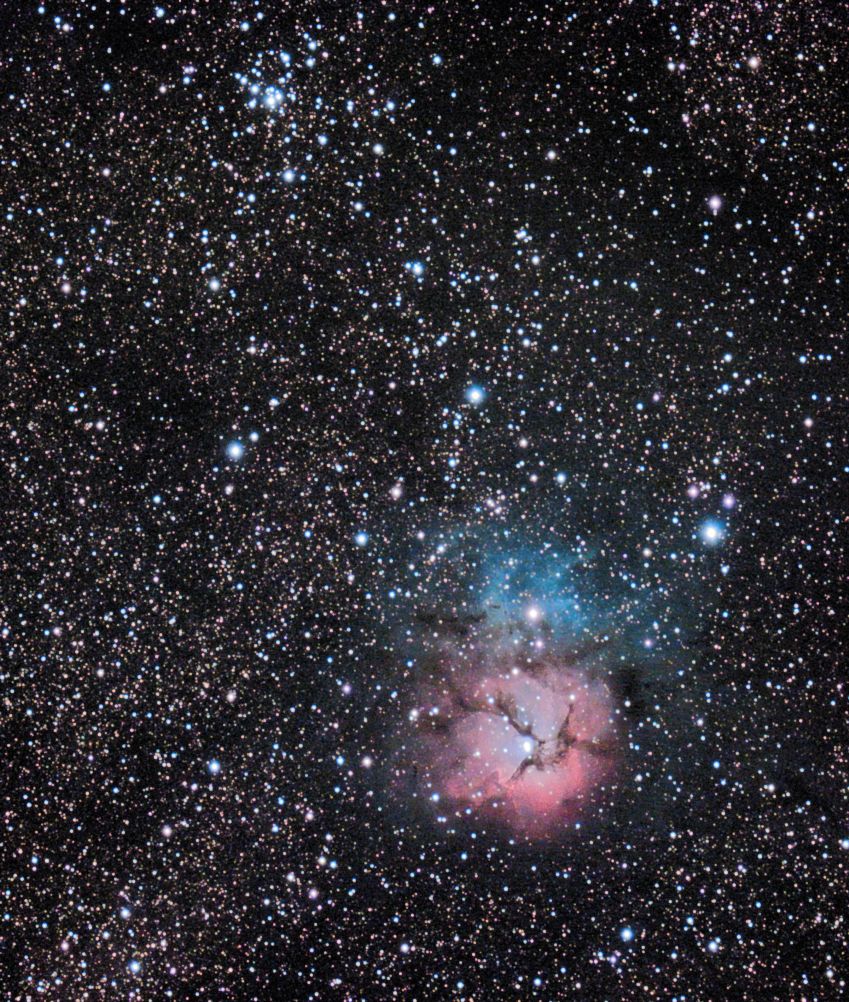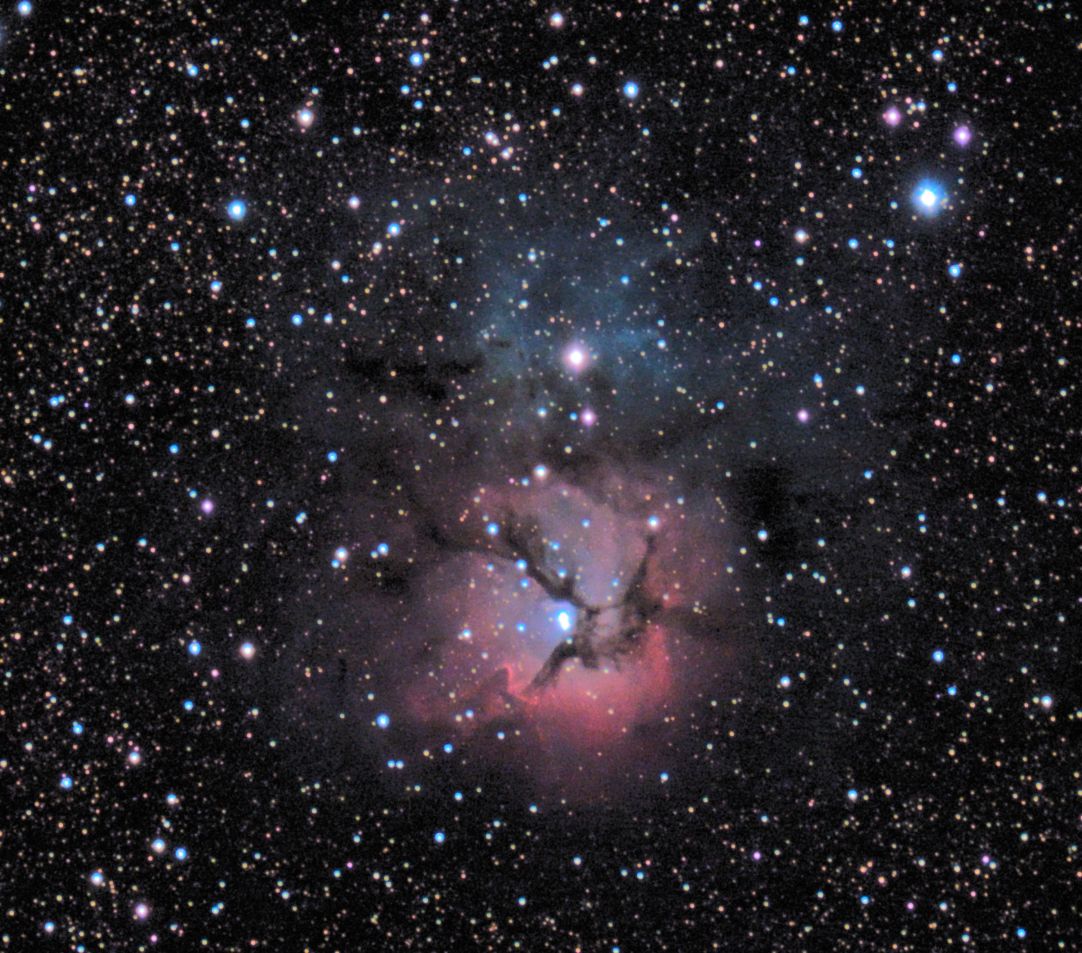The Trifid Nebula, M20, is a beautiful gaseous cloud within which new stars are being born. It is one of several spectacular telescopic sights embedded in the summertime Milky Way.
The Trifid is a colorful study in cosmic contrasts. You can also see the nearby open star cluster M21 near the top of this image. The Trifid itself is about 40 light-years across and a mere 300,000 years old. That makes it one of the youngest star forming regions in our sky, with newborn and embryonic stars embedded in its natal dust and gas clouds. The nebula is about 5,000 light-years away. Estimates of the distance to open star cluster M21 are similar to M20’s, but although they share this gorgeous skyscape there is no apparent connection between the two. In fact, M21’s stars are much older, about 8 million years old.
The Trifid Nebula together with the M21 Open Cluster (5 min total exposure June 27, 2020)

This second image zooms in a little on the Triffid to better show how it is trisected by dark lanes of dust.
The Trifid Nebula (5 min total exposure June 27, 2020)

The name Trifid means ‘divided into three lobes’. The object is an unusual combination of an open cluster of stars; an emission nebula (the lower, red portion), a reflection nebula (the upper, blue portion) and a dark nebula (the apparent gaps within the emission nebula that cause the trifurcated appearance. Viewed through a small telescope, the Trifid Nebula is a bright and peculiar object, and is thus a perennial favorite of amateur astronomers.